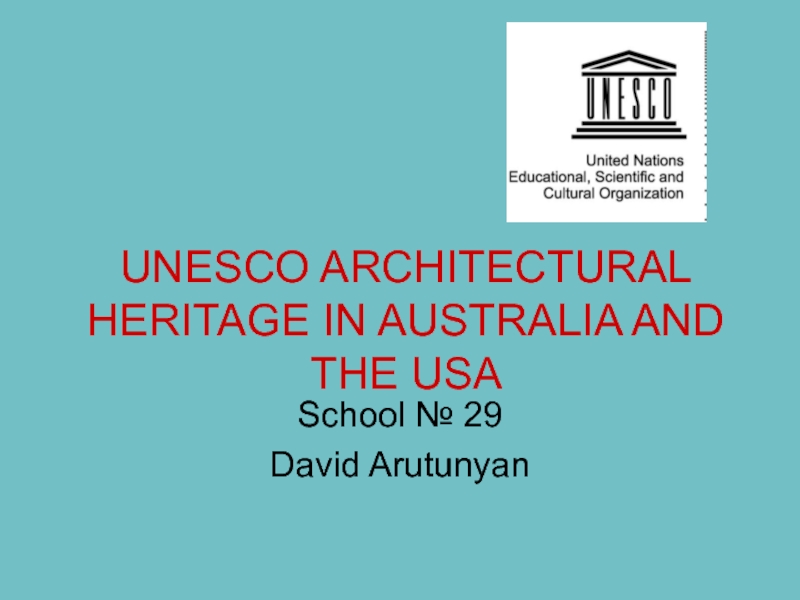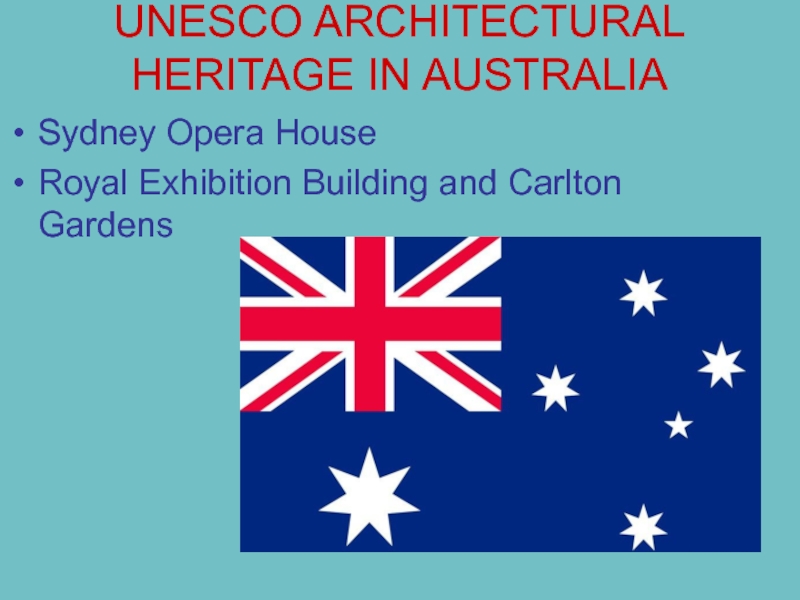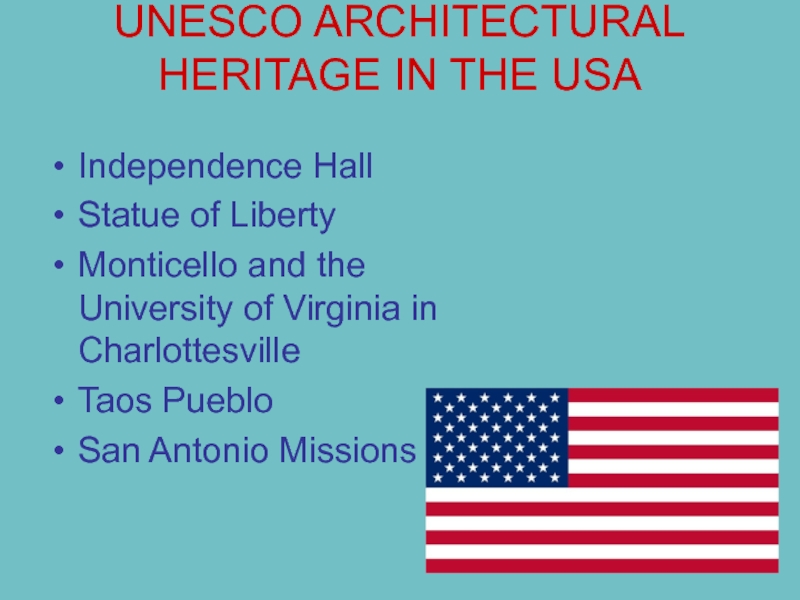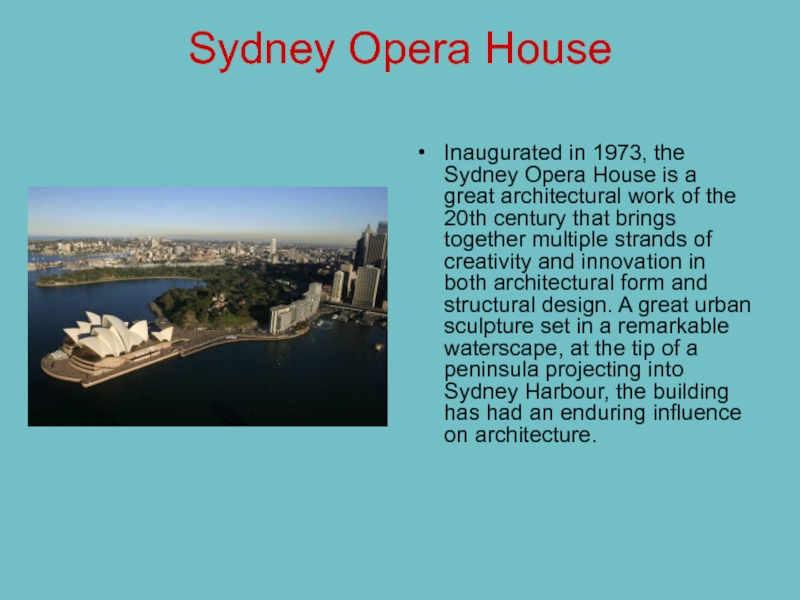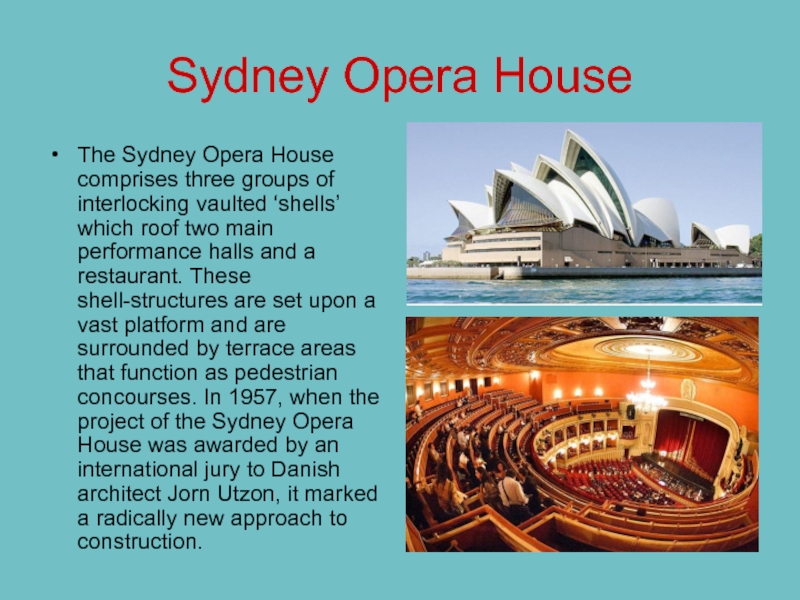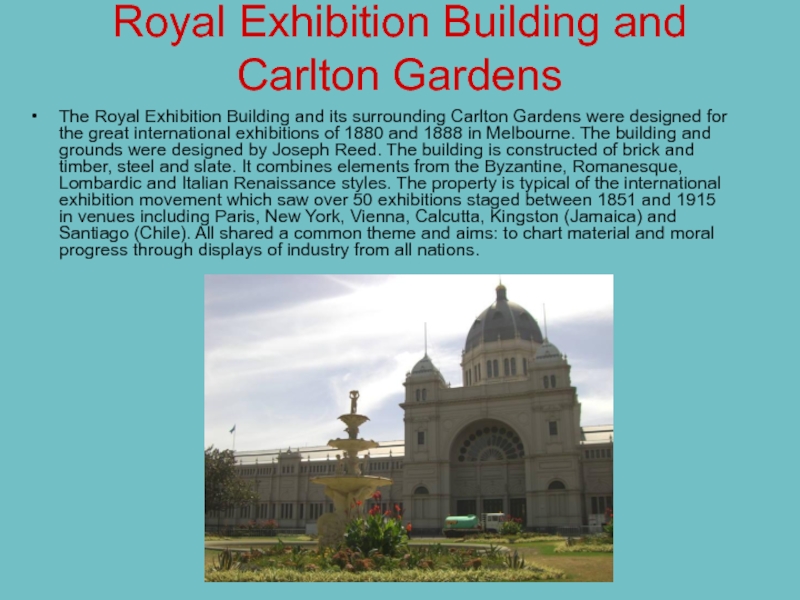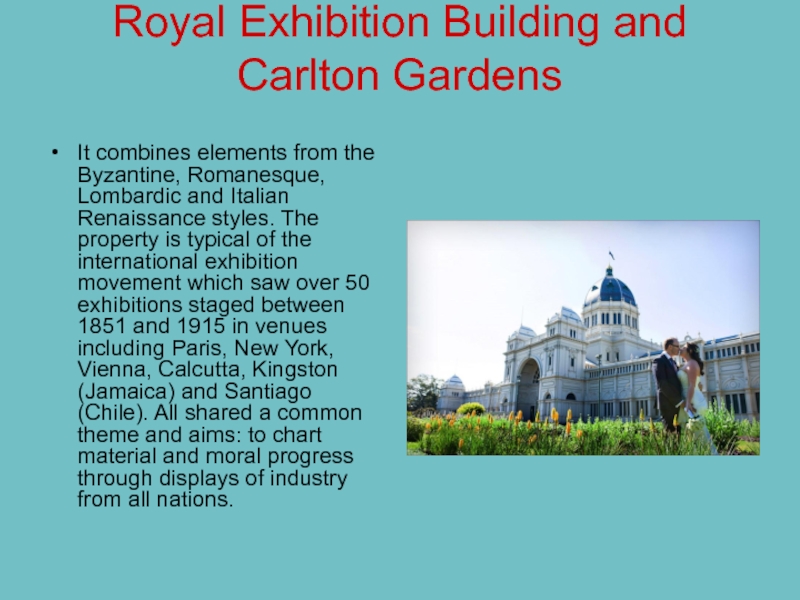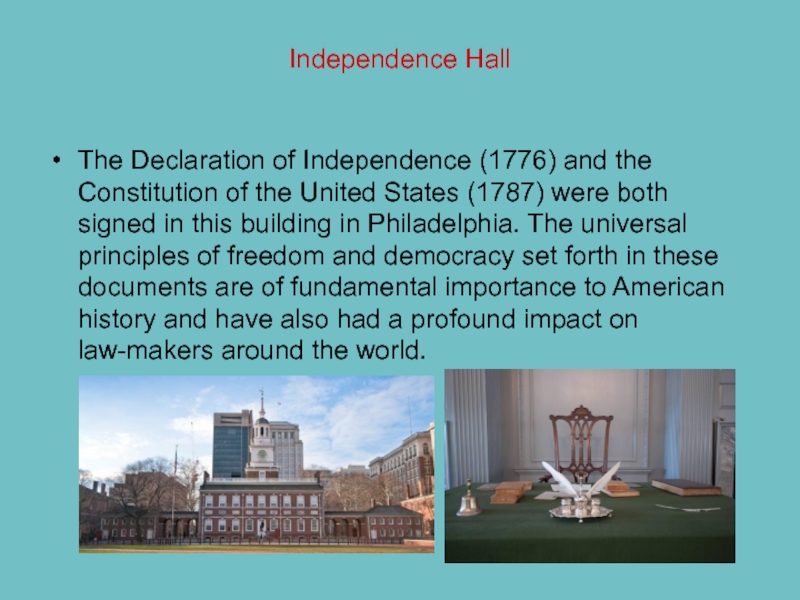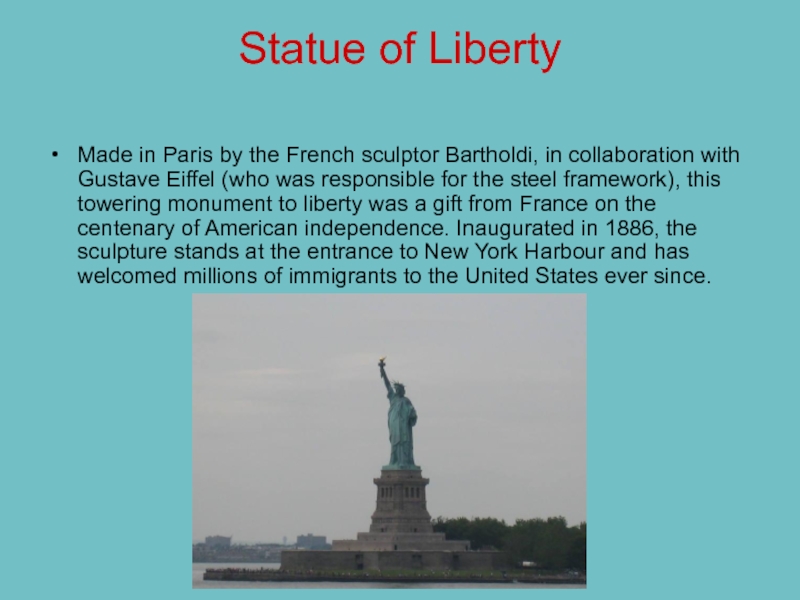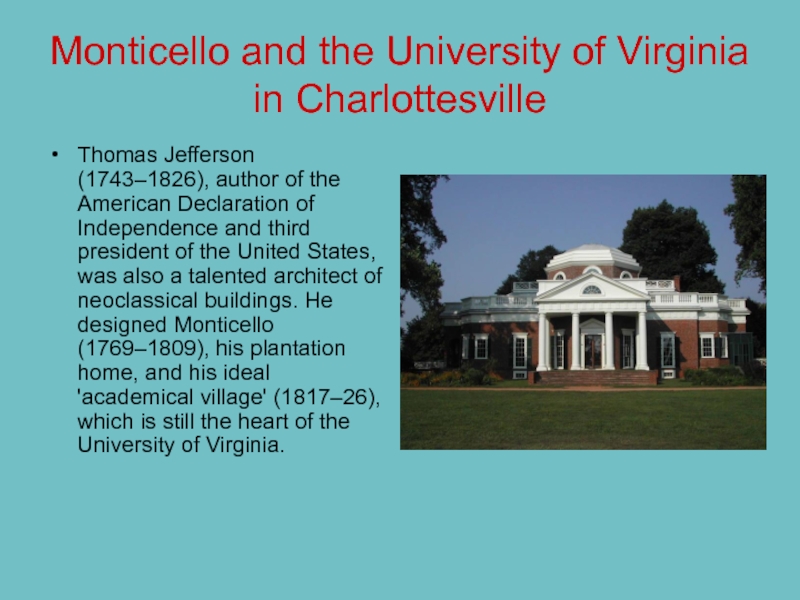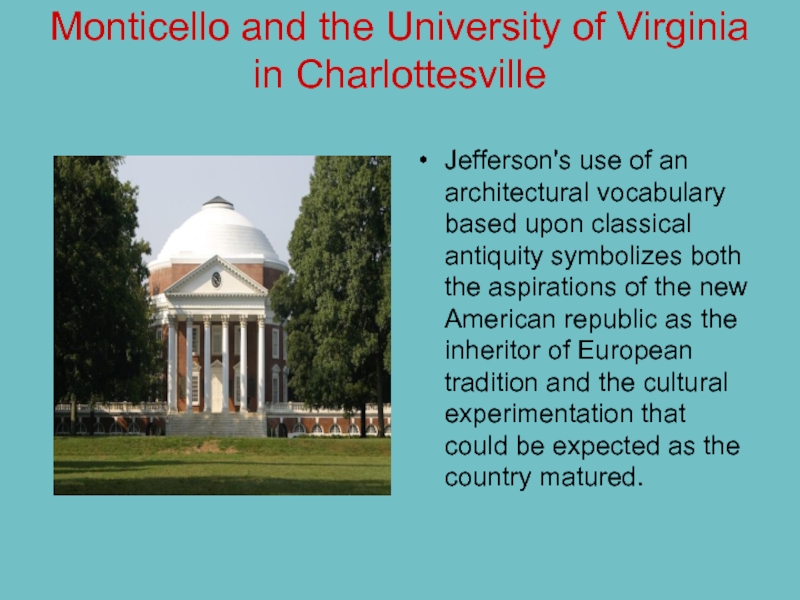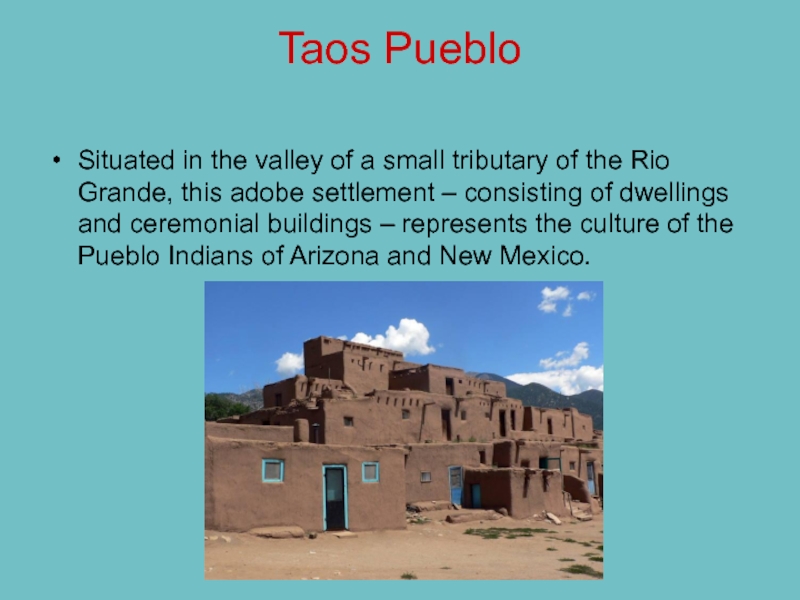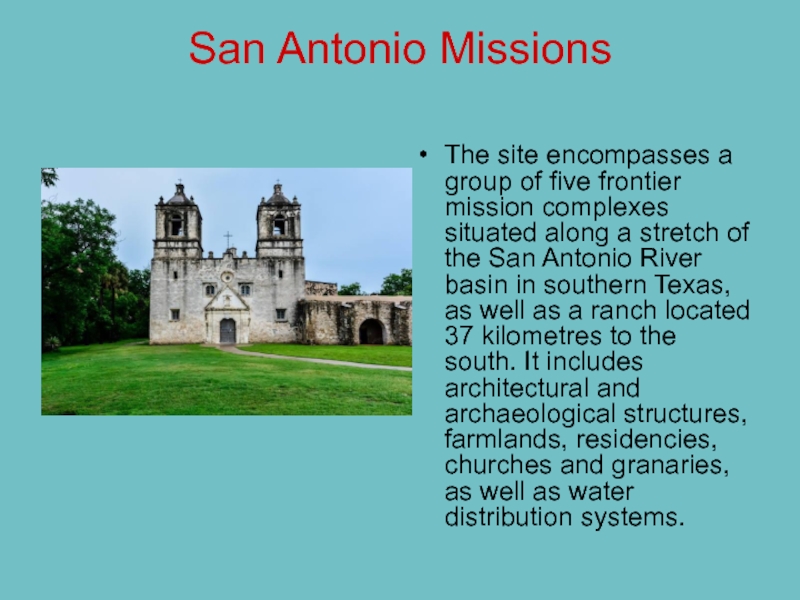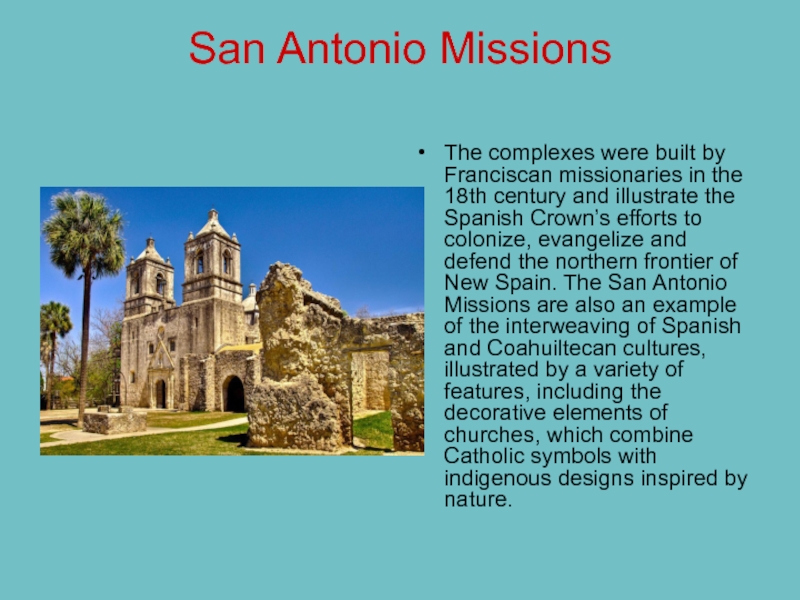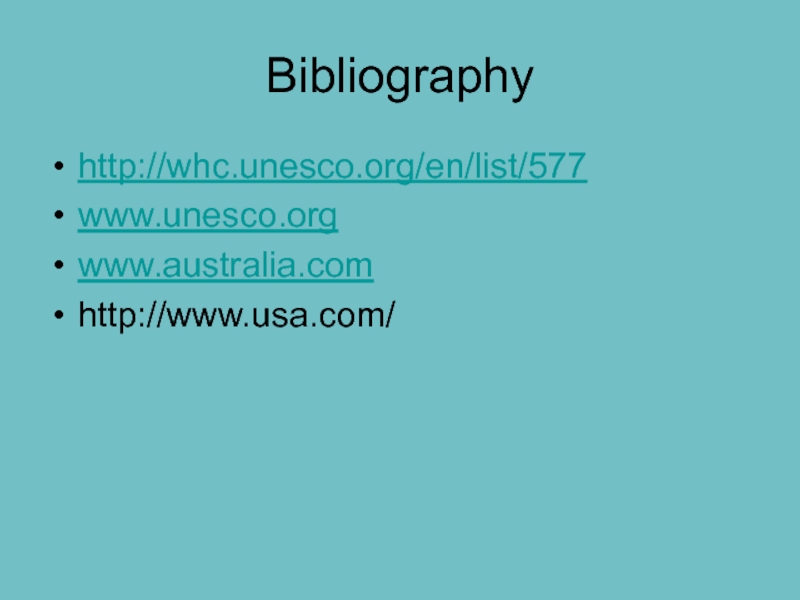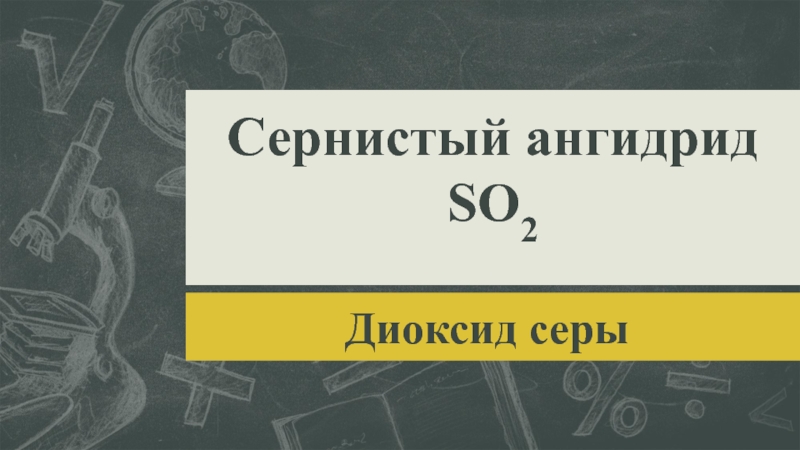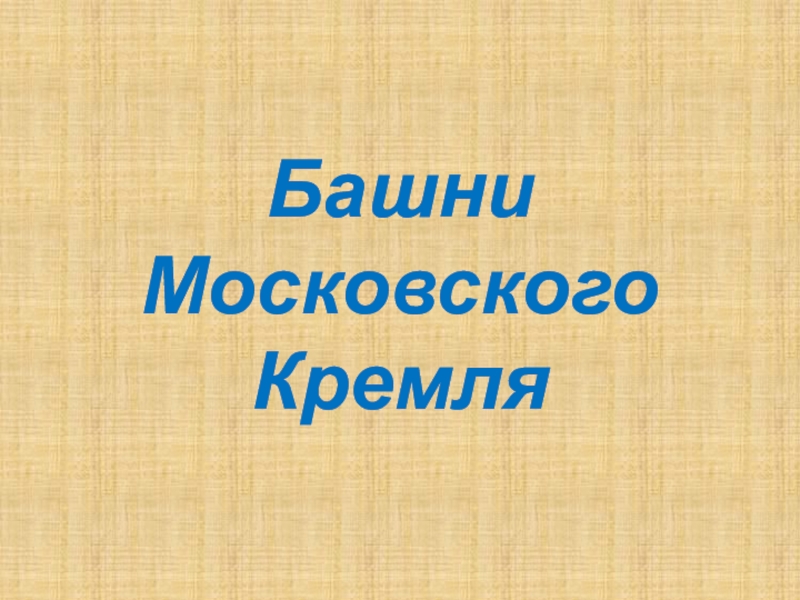Слайд 1
UNESCO ARCHITECTURAL HERITAGE IN AUSTRALIA AND THE USA
School № 29
David
Arutunyan
Слайд 2UNESCO ARCHITECTURAL HERITAGE IN AUSTRALIA
Sydney Opera House
Royal Exhibition Building and
Carlton Gardens
Слайд 3UNESCO ARCHITECTURAL HERITAGE IN THE USA
Independence Hall
Statue of Liberty
Monticello and
the University of Virginia in Charlottesville
Taos Pueblo
San Antonio Missions
Слайд 4Sydney Opera House
Inaugurated in 1973, the Sydney Opera House is
a great architectural work of the 20th century that brings
together multiple strands of creativity and innovation in both architectural form and structural design. A great urban sculpture set in a remarkable waterscape, at the tip of a peninsula projecting into Sydney Harbour, the building has had an enduring influence on architecture.
Слайд 5Sydney Opera House
The Sydney Opera House comprises three groups of
interlocking vaulted ‘shells’ which roof two main performance halls and
a restaurant. These shell-structures are set upon a vast platform and are surrounded by terrace areas that function as pedestrian concourses. In 1957, when the project of the Sydney Opera House was awarded by an international jury to Danish architect Jorn Utzon, it marked a radically new approach to construction.
Слайд 6Royal Exhibition Building and Carlton Gardens
The Royal Exhibition Building and
its surrounding Carlton Gardens were designed for the great international
exhibitions of 1880 and 1888 in Melbourne. The building and grounds were designed by Joseph Reed. The building is constructed of brick and timber, steel and slate. It combines elements from the Byzantine, Romanesque, Lombardic and Italian Renaissance styles. The property is typical of the international exhibition movement which saw over 50 exhibitions staged between 1851 and 1915 in venues including Paris, New York, Vienna, Calcutta, Kingston (Jamaica) and Santiago (Chile). All shared a common theme and aims: to chart material and moral progress through displays of industry from all nations.
Слайд 7Royal Exhibition Building and Carlton Gardens
It combines elements from the
Byzantine, Romanesque, Lombardic and Italian Renaissance styles. The property is
typical of the international exhibition movement which saw over 50 exhibitions staged between 1851 and 1915 in venues including Paris, New York, Vienna, Calcutta, Kingston (Jamaica) and Santiago (Chile). All shared a common theme and aims: to chart material and moral progress through displays of industry from all nations.
Слайд 8Independence Hall
The Declaration of Independence (1776) and the Constitution of
the United States (1787) were both signed in this building
in Philadelphia. The universal principles of freedom and democracy set forth in these documents are of fundamental importance to American history and have also had a profound impact on law-makers around the world.
Слайд 9Statue of Liberty
Made in Paris by the French sculptor Bartholdi,
in collaboration with Gustave Eiffel (who was responsible for the
steel framework), this towering monument to liberty was a gift from France on the centenary of American independence. Inaugurated in 1886, the sculpture stands at the entrance to New York Harbour and has welcomed millions of immigrants to the United States ever since.
Слайд 10
Monticello and the University of Virginia in Charlottesville
Thomas Jefferson (1743–1826),
author of the American Declaration of Independence and third president
of the United States, was also a talented architect of neoclassical buildings. He designed Monticello (1769–1809), his plantation home, and his ideal 'academical village' (1817–26), which is still the heart of the University of Virginia.
Слайд 11Monticello and the University of Virginia in Charlottesville
Jefferson's use of
an architectural vocabulary based upon classical antiquity symbolizes both the
aspirations of the new American republic as the inheritor of European tradition and the cultural experimentation that could be expected as the country matured.
Слайд 12Taos Pueblo
Situated in the valley of a small tributary of
the Rio Grande, this adobe settlement – consisting of dwellings
and ceremonial buildings – represents the culture of the Pueblo Indians of Arizona and New Mexico.
Слайд 13San Antonio Missions
The site encompasses a group of five frontier
mission complexes situated along a stretch of the San Antonio
River basin in southern Texas, as well as a ranch located 37 kilometres to the south. It includes architectural and archaeological structures, farmlands, residencies, churches and granaries, as well as water distribution systems.
Слайд 14San Antonio Missions
The complexes were built by Franciscan missionaries in
the 18th century and illustrate the Spanish Crown’s efforts to colonize,
evangelize and defend the northern frontier of New Spain. The San Antonio Missions are also an example of the interweaving of Spanish and Coahuiltecan cultures, illustrated by a variety of features, including the decorative elements of churches, which combine Catholic symbols with indigenous designs inspired by nature.
Слайд 15Bibliography
http://whc.unesco.org/en/list/577
www.unesco.org
www.australia.com
http://www.usa.com/
